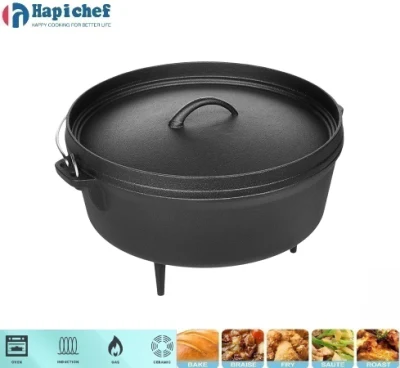Baking Bread Perfectly in a Cast Iron Skillet
The Art of Baking Bread in a Cast Iron Pan
Baking bread has been a cherished tradition for centuries, with every culture adding its own flair and techniques. One of the most effective tools in the kitchen for baking artisan-quality bread is the cast iron pan. Not only does a cast iron pan provide excellent heat retention and distribution, but it also creates a delightful crust that captures the essence of homemade bread.
The Allure of Cast Iron
Cast iron cookware has been a staple in many households for generations. Its durability and versatility make it perfect for various cooking methods, including frying, baking, and sautéing. When it comes to baking bread, the heavy nature of cast iron allows for even heat distribution, essential for achieving that perfect loaf. Unlike lightweight baking pans, which can lead to uneven baking and pale crusts, a cast iron pan helps form a golden, crispy crust that envelops the tender crumb inside.
Preparing the Dough
Before you can bake your bread, you need to prepare your dough. Whether you’re making a classic sourdough, a rustic country loaf, or a simple no-knead bread, the process involves mixing flour, water, salt, and yeast. Many bread recipes benefit from a slower fermentation process, allowing the flavors to deepen. Once the dough has risen and developed a delightful texture, it’s time to preheat your cast iron pan.
The Art of Baking Bread in a Cast Iron Pan
One of the keys to successful bread baking in a cast iron pan is preheating. Place the pan in the oven at a high temperature (around 450°F or 232°C) while your dough rests. The high heat allows the pan to become thoroughly heated and creates steam when the dough is placed inside, which is vital for achieving that coveted oven spring—when the bread rises dramatically in the first few minutes of baking.
bread iron pan

Baking Technique
Once the oven and the cast iron pan are preheated, carefully transfer your shaped dough onto a piece of parchment paper or directly into the pan. If you’re ambitious, you can score the top of the dough with a sharp knife to create decorative patterns that will expand beautifully as the bread rises. Quickly cover the pan (if it has a lid or use aluminum foil) to trap steam initially, which further helps develop a good crust.
Bake the bread for a period of 30 to 45 minutes, depending on the recipe, removing the lid halfway through to allow the crust to gain color and texture. The aroma of freshly baked bread will fill your kitchen, beckoning everyone to gather around.
Cooling and Enjoying
Once your loaf is golden brown and sounds hollow when tapped on the bottom, it’s time to remove it from the oven. Allow it to cool on a wire rack; this step is crucial as it lets the steam escape, ensuring the crust remains crispy. Cutting into the bread too early can result in a gummy texture, spoiling the work you put into the baking process.
Conclusion
Baking bread in a cast iron pan is not just about creating a delicious loaf; it’s an experience that connects you to generations of bakers who came before. The tactile nature of kneading dough, the anticipation of rising, and the delightful aroma of baking can transform a simple act into a heartfelt ritual. As you slice into your freshly baked bread, slather it with butter, or use it for sandwiches, remember the care and tradition behind each loaf. With a bit of practice and patience, you can take your bread baking to new heights, one cast iron pan at a time.
-
Transform Your Kitchen with Big Iron Cast Wok CraftsmanshipNewsAug.05,2025
-
Traditional Cooking with Cast Iron Woks and Pots with HandlesNewsAug.05,2025
-
Outdoor and Indoor Cooking with Cast Iron Wok MasteryNewsAug.05,2025
-
Maximize Outdoor Cooking Versatility with Premium Cast Iron WoksNewsAug.05,2025
-
Master Traditional Cooking with a Chinese Cast Iron WokNewsAug.05,2025
-
Culinary Power with High-Performance Cast Iron WoksNewsAug.05,2025
-
Why Every Kitchen Needs a Casserole Cast Iron DishNewsJun.24,2025
